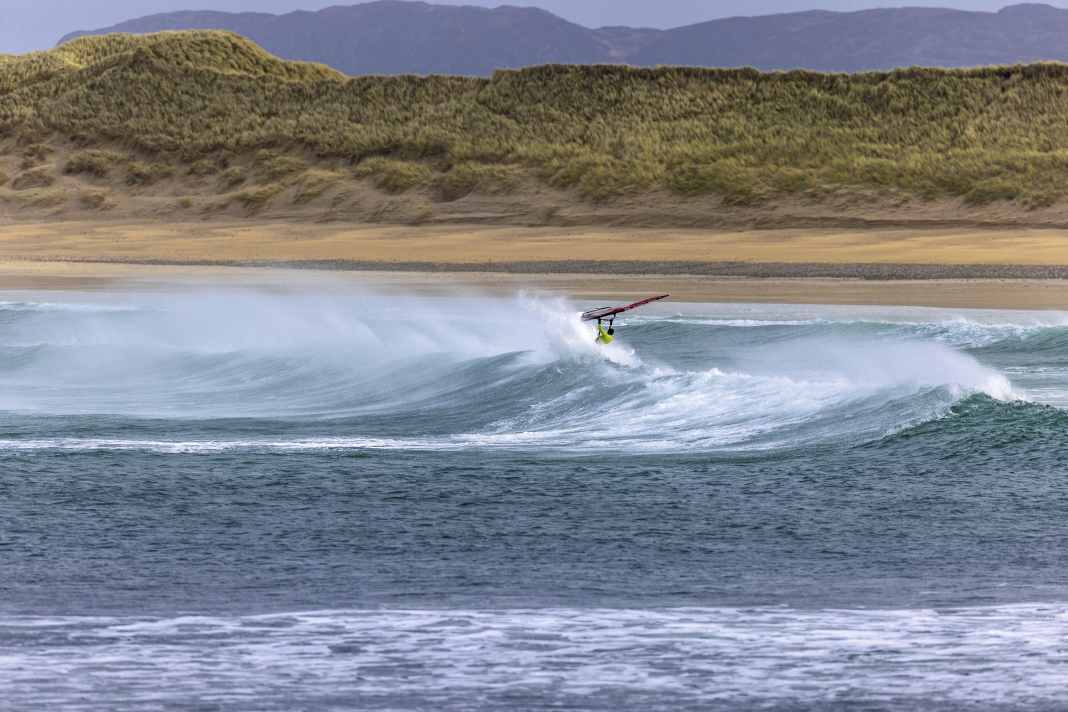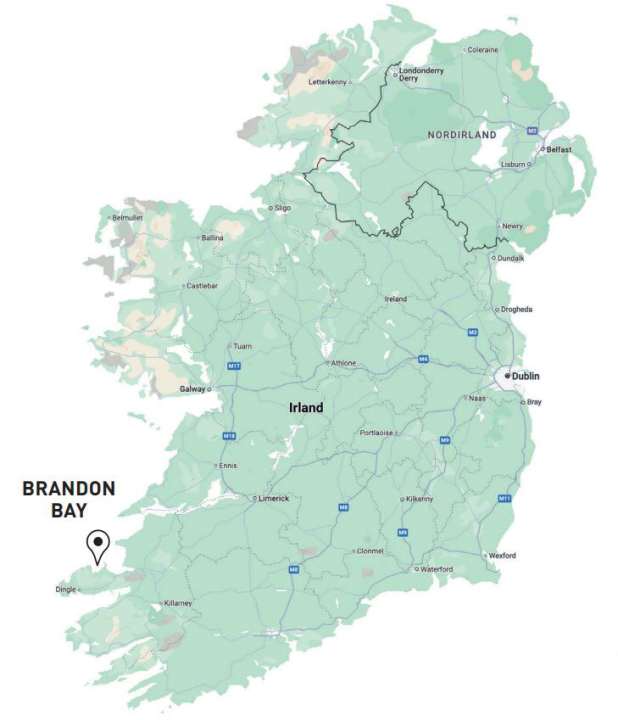Autumn trips: Brandon Bay and Co. - searching for waves in the west of Ireland




More spot tips for autumn trips:
For individual travellers who are looking for wind and, above all, waves and don't want to be forced to take a plane, it's worth letting your gaze wander westwards on the map of Europe - provided you're not made of sugar, are looking for seclusion and don't have a neoprene allergy.
Then a trip to the west coast of the Emerald Isle of Ireland, where you can feel the raw power of the North Atlantic without any brakes, could be an option. The waves are among the best in the world and are not just for cracks, especially in the region around Brandon Bay. In the sandy bay, the wave spots line up like a string of pearls, offering many different options for different wind directions and skill levels.
Mystical Brandon Bay
The trip to Ireland usually starts in the south-east, where you often land in Cork or Ross Lare when travelling by ferry. The first destination should be the Dingle Peninsula in the south-west. Anyone who has travelled from Dingle over the mist-covered Conor Pass and caught a first glimpse of Brandon Bay with its endless lines of waves that curve backwards knows that this must be the promised land for wave fans.
Several world-class breaks are lined up along a length of almost ten kilometres in the crescent-shaped bay: spots such as Gowlane, Stradbally and Mossies enjoy an excellent reputation among wave fans. Because the conditions in the bay are so varied, many windsurfing travellers get stuck here and a planned round trip is often cancelled - for good reason.
Swell from the south-west or west is smaller in the western part of the bay, at the Kilcummin or Fermoyle spots, where less experienced surfers can hide a little. Apart from that, there is always a stretch of beach in the rest of the bay from south to west where the wind comes in at the right angle. If you're up for it, you can first surf side-offshore conditions in Gowlane in a south-westerly wind and then hone your jumping skills 30 minutes later a few kilometres further on, for example in Dumps, in a sideshore wind. A day at the legendary Pointbreak Mossies at the northern end of the bay is also an experience. A powerful reef wave breaks here in north to north-westerly winds and at high tide, running several hundred metres and allowing numerous turns to leeward. Afterwards, you can talk about your exploits (or washes) with the locals in Spillane's Bar over a Guinness - in the knowledge that legends such as Josh Stone, Robby Naish and Josh Angulo have also sat at the bar here.
Galway, Magheraroarty, Dublin - Ireland is full of attractive destinations
Those who make the jump out of Brandon Bay do so in the certainty that the north-west of Ireland will also get the full brunt of the Atlantic swells in autumn. Tip: A detour to Galway. The beautiful little town was the European Capital of Culture in 2020. When "The Green Isle" once again lives up to its name and the surf spots are drowning in rain, you will find numerous sights, restaurants and pubs here. Many wave fans first aim for the beautifully exposed Mullet peninsula and then Magheraroarty in the north-west as the ultimate destination, as this bay is also very variable and offers everything from beach to reef breaks with southerly to westerly winds. From Magheraroarty back to the south, Dublin is practically on the way - too attractive to simply leave it to the left.
Area information Ireland/Brandon Bay

Arrival
- Approximately 1,500 km from NRW, 1,900 km from Hamburg
- Eurotunnel or ferry to the UK: Calais-Dover (prices vary, so compare)
- 2nd crossing: Rosslare-Fishguard
- Then another 300 kilometres through Ireland to Brandon Bay
- Alternative: Direct ferry connection from Normandy
Wind, weather, neoprene recommendation
Due to the Atlantic currents, the water temperature does not usually drop below 10 degrees until the turn of the year. When the many low-pressure systems characteristic of autumn and winter rage over the North Atlantic and hit Ireland from a south-westerly direction, they bring with them harsh weather conditions and lots of rain, but the outside thermometer usually still shows double-digit temperatures during the day, even in the depths of winter. Although this is more pleasant than surfing in the North and Baltic Seas at the same time of year, it is a good winter neo between 4 and 6 millimetresa hat and shoes should be in everyone's luggage from October onwards. Having a dry second neo at the ready sounds like pure luxury, but it can make perfect sense for those who are serious in harsh autumn destinations like Ireland.
Living & Camping
In the low season, you will find what you are looking for on the well-known booking platforms and have a free choice of B&Bs or rooms. Wild camping is usually tolerated in the winter months, as long as you leave everything tidy. Often you have no other choice, as many campsites are closed in winter.
